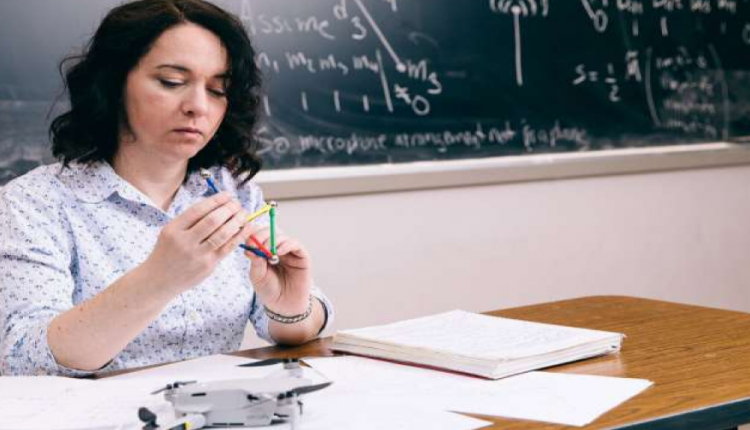
Bats’ ability to echolocate to both navigate and find found in the dark was the inspiration behind the development of sonar and radar. Now, mathematicians have found that by adding microphones and a speaker on a drone with the help of algebra and geometry, the drone can “hear” the shape of a room.
This signal processing research has potential applications for people, underwater vehicles and even cars, said Mireille “Mimi” Boutin, a Purdue University associate professor of mathematics and electrical and computer engineering, pictured above.
Boutin and Gregor Kemper, a professor of algorithmic algebra in the Department of Mathematics at the Technical University of Munich, have worked to reconstruct the wall configuration of rooms by using echoes picked up by microphones on the drone.
When a microphone hears an echo, the time difference between the moment the sound was produced and the time it was heard is recorded. That time difference shows the distance traveled by the sound after bouncing on a wall.
The challenge is to determine which distance corresponds to which wall, a process called echo sorting. Sorting the echoes accurately ensures that all walls that are heard are truly there. This way, the algorithm does not produce “ghost” walls.
This research is directly related to two complementary problems in engineering: localization (determining where you are in an environment) and mapping (determining the shape of your environment).
The research done by Boutin and Kemper proves that it’s possible for a minimal setup of four microphones arranged in a non-planar shape, along with just a loudspeaker emitting one signal, to reconstruct a room. Their work is published in the SIAM Journal on Applied Algebra and Geometry.
The next steps will be to consider other scenarios, such as when the movement of the drone is restricted, or when the drone listens to the echoes of consecutive sounds as it is moving.
Practically, this echolocation research could be applied in numerous ways. Such a device could be carried by a person, affixed to a car, or even used underwater. Having more signal input would prevent solely relying on one type of input, like car backup cameras, and improve the chances that objects could be detected more accurately and in a wider variety of conditions.
“Many engineering applications require a lot of math, and sometimes you need to use tools from areas of mathematics that are considered abstract — in this case, methods from commutative algebra,” Boutin said.
“It’s considered a very abstract part of mathematics, but it applies to very practical engineering problems. This shows just how unclear the boundary between applied and abstract math can be, and that engineering is truly a multidisciplinary discipline.”
Source: Purdue University
